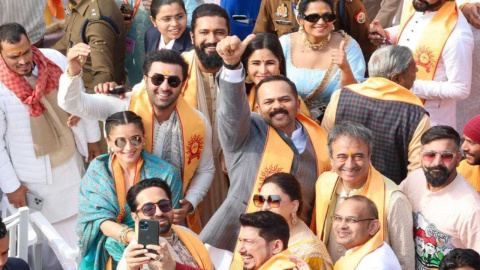
Ram Mandir:
The inauguration of Ram Mandir in Ayodhya on January 22nd marked a historic event steeped in religious and political significance. The Praan Prathistha ceremony, symbolizing the establishment of life within the temple, triggered extensive discussions and controversies. This comprehensive article aims to unravel the various facets of the ceremony, exploring the attendance dynamics, political dimensions, the stand of religious leaders, and the virtues exemplified by Lord Ram.
Controversial Attendances:
One notable aspect of the event was the absence of key political figures who played pivotal roles in the Ram Mandir Agitation Movement. LK Advani and Murli Manohar Joshi, leaders synonymous with the movement, refrained from attending, citing age-related concerns. This raised eyebrows and sparked debates about the symbolism of their non-participation. In contrast, the presence of Bollywood celebrities, including Katrina Kaif, Rohit Shetty, Ranbir Kapoor, and Alia Bhatt, added an unexpected layer to the ceremony, prompting scrutiny and discussions about the intersection of politics and entertainment.
Shankaracharyas’ Stand:
The decision of the four main Shankaracharyas to abstain from the ceremony brought religious dimensions to the forefront. Nischalananda Saraswati and Avimukteshwaranand Saraswati, two prominent Shankaracharyas, expressed reservations about the event’s alignment with Hindu scriptures. Their non-participation led to attempts to defame them on social media platforms, highlighting the challenges faced by dissenting voices in the age of digital discourse. The spread of false narratives, including claims of a fabricated visit to Ajmer Sharif, underscored the complexities of expressing dissent and the potential repercussions faced by religious leaders.
Political Dimensions:
The rejection of invitations by political leaders such as Uddhav Thackeray of Shiv Sena and members of the Congress party injected a political undercurrent into the ceremony. The reasons cited, including concerns about the incomplete nature of the temple and allegations of politicization, brought to light the delicate balance between religious sentiments and political maneuvering. Critics argued that the event, despite its historical and cultural significance, was being exploited for electoral gains, challenging the principles of secularism.
Ram’s Virtues:
Amidst the political and religious complexities, the article delves into the virtues exemplified by Lord Ram during his exile, as chronicled in Valmiki’s Ramayana. Lord Ram’s response to adversity, characterized by humility, compassion, and forgiveness, serves as a moral compass. The narrative explores the timeless lessons embedded in Ram’s life, inviting viewers to reflect on the moral and ethical dimensions of power and leadership.
Challenges Faced:
The challenges faced by dissenting voices, particularly the Shankaracharyas, reveal the darker side of contemporary discourse. False narratives and defamatory tactics employed on social media platforms underscore the difficulty of expressing contrary opinions in an era dominated by digital narratives. The fabricated visit to Ajmer Sharif and the baseless accusation of accepting money to reject invitations highlight the hurdles faced by those who choose to dissent.
Final Thoughts:
As discussions around the Ram Mandir inauguration persist, the ceremony serves as a focal point for broader conversations about morality, values, and the pursuit of power. The nuanced exploration of historical, cultural, and moral aspects encourages informed and reflective dialogues. The article concludes by emphasizing the need for a balanced understanding of the intricate intersections of religion, politics, and morality in shaping India’s cultural and political landscape.
Final talk:
The inauguration of Ram Mandir emerges as a complex tapestry woven with religious, political, and moral threads. Unraveling the intricacies surrounding the event requires a holistic perspective that considers historical narratives, contemporary challenges, and the enduring lessons embedded in Lord Ram’s life. As India navigates the aftermath of this historic event, thoughtful conversations become imperative, fostering a collective understanding that transcends divisive narratives.




